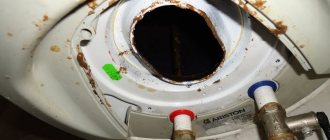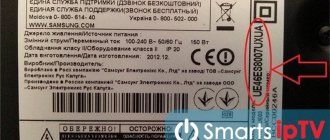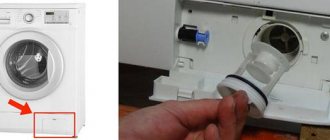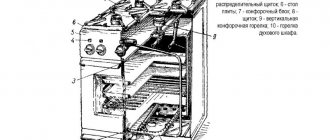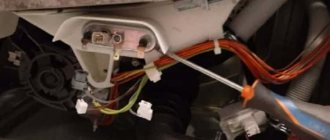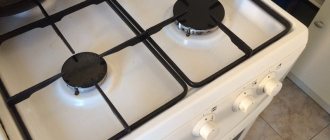When operating a vacuum cleaner, it is necessary to periodically carry out a preventive inspection of the parts contained inside its body. You will need to turn on the electric motor. In this case, it is very important to pay attention to the intensity of the appearance of sparks in the area of its sliding contacts - brushes. A spark that is barely noticeable to the eye is normal for a properly functioning engine. But strong and frequent flashes indicate deviations in engine operation. And this is a reason to start looking for the reasons why the brushes in the vacuum cleaner spark, in order to prevent serious damage in the future.
Causes of abnormal sparking of an electric motor
Intense flashes on brushes can occur for a number of reasons:
- the service life of the sliding contacts is exhausted (the springs or the brushes themselves are worn out);
- dustiness of the walls and contacts on the commutator and rotor;
- fault in the rotor or stator winding.
To determine a specific malfunction, it is necessary to diagnose the electric motor. This will help eliminate the cause.
Is it possible to fix a vacuum cleaner yourself?
Most of the models of household cleaning appliances from the Korean company are represented by designs that are relatively simple in technical terms. Accordingly, in most cases, repairing such products is also quite simple.
Obviously, the complexity of repair work is completely related to a specific unit or part. Thus, fixing a small break in a corrugated hose is much easier than replacing a broken electric motor bearing.
Let's look at common malfunctions of Korean-made household vacuum cleaners and possible ways to eliminate such defects at home. It is logical to note: with all due respect to service workshops, the amount of payment for repairs in the service often approaches the cost of a new vacuum cleaner.
Checking the wear of the sliding contacts
Most often, the cause of excessive sparking during operation of an electric motor can be exhausted or damaged brushes. It is not difficult to remove this pair of parts for inspection. Depending on the model, the sliding contacts are secured using clamps or bolts.
Important! A visual inspection makes it clear how badly the ends of the contacts are charred, what is the condition of the springs, in order to make a decision about replacing them with new ones.
If there is obvious damage on the end of at least one removed element, signs that they were burning, not only will they need to be replaced. You will also need a visual inspection of the following parts:
- collector;
- rotor or stator windings.
Advice! Brushes should be replaced in pairs. Some models provide for replacement of elements included with the brush holder.
How to replace
In order to correctly replace brushes for electric motors of a vacuum cleaner, it is important to remove the motor correctly. You need to unscrew the screws at the base of the vacuum cleaner and pull out the vacuum cleaner body. The engine is in a plastic protective shell. You need to unscrew it and take out the motor, take the engine in your hands and see if there is any damage to it. On two sides of the shaft, rectangles are visible. These are brushes. If they are damaged, you need to install new ones. The collector should also be inspected and wiped. Then you need to insert new brushes and repeat all steps in reverse order.
Important! When disassembling the vacuum cleaner, record or videotape all your actions so that you can later reassemble the vacuum cleaner correctly.
The most common reason for poor vacuum cleaner performance is wear and tear on its internal parts. Sometimes it is necessary to contact a service center, but first you can try to do the repair yourself. Good luck with your vacuum cleaners.
Thanks to household appliances, home owners gain complete comfort. Using the same vacuum cleaners significantly reduces the physical effort spent on cleaning. Meanwhile, even super-reliable equipment, for example from Samsung, does not last forever, which says one thing: someday the time comes for repair or replacement.
However, convenient and practical units quickly make users get used to working with them. Therefore, most of their owners prefer to restore their devices to their functionality rather than buy new ones. We will tell you what repairs of Samsung vacuum cleaners can be successfully carried out with your own hands.
Checking the contacts of the brush-collector unit
The reason for sparking of serviceable parts of the block may be poor contact due to insufficient contact with the collector lamellas. During operation of the vacuum cleaner, roughness forms on the surfaces of the engine's switching parts, which prevent the necessary contact. Grinding with fine sandpaper – “zero” – will help eliminate bumps, grooves and scratches on the commutator.
Advice! If the brushes spark excessively, then they should be pressed more tightly to the commutator using springs. In this case, the free movement of the block elements must not be disrupted.
Why do the brushes in the electric motor of a vacuum cleaner spark strongly?
The brushes in the vacuum cleaner motor are responsible for creating the so-called “sliding” contact. It converts mechanical impulse into electrical energy when the device operates. The elements move through the commutator, making and breaking connections with the contacts, and a small amount of sparking is considered completely normal. But if it is too strong, then the problem requires elimination, otherwise sooner or later the engine will begin to overheat, lose power and fail.
Sparking is considered abnormal if it is distinguished by a barely noticeable stripe in the commutator area.
There are several main reasons why the vacuum cleaner does not work well and the brushes spark:
- Wear. The part of the brush in contact with the commutator is made of carbon and with frequent use wears out and loses length and volume. Contact between parts deteriorates, and the engine sparks profusely.
- Pollution. During operation, the brushes, in constant contact with the commutator, form carbon and metal dust, which gradually accumulates on the internal parts. After this, when friction occurs, the engine begins to spark, and carbon deposits form, which only worsens the problem.
- Poor contact. Both old and new brushes may not fit tightly to the commutator; in both cases, the motor sparks.
- The angle of inclination is off. The brushes must be positioned strictly along one line passing through the axis of rotation of the commutator. If they are installed incorrectly, or are simply loose from constant vibration in an old vacuum cleaner, the motor will inevitably begin to spark.
- Short circuit between winding turns. This is the most difficult and unpleasant reason why the vacuum cleaner motor sparks and smells. Irregularities in operation are often accompanied by popping noises and a drop in speed. Repairing the brushes in this case is not enough. More often, you have to change the entire engine so that it stops sparking, or send it to a service center for rewinding.
If problems arise, sometimes they can only be eliminated with the help of specialists. But most problems can be corrected at home.
Prevention of electric motor contamination
Graphite or metal particles from the brushes contaminate the commutator lamellas over time. This causes a large number of sparks, overheating and carbon formation, as well as displacement of the brushes from the working (initial) position.
Dust can accumulate between the contacts on the rotor. It is necessary to periodically clean the surface using fine sandpaper and degrease it by wiping with alcohol or gasoline.
How to choose
Let's look at the types of brushes for the Samsung vacuum cleaner motor and the selection criteria.
There are several types of brushes for the Samsung vacuum cleaner motor:
- graphite - made of graphite with the addition of filler in the form of soot and other substances;
- carbon-graphite - used in technology with light loads, as they are characterized by low strength;
- electro-graphite - have great strength, used for medium contact mode;
- copper-graphite - their main component: copper, graphite or tin powder; highly durable, protected from gases and various liquids.
To choose the right brushes for the motor of a Samsung vacuum cleaner, you need to know their parameters: the geometric dimensions of the brushes, the grade of graphite and the wire cross-section.
Integrity of rotor and stator windings
More serious problems that cause strong sparking of an electric motor are interturn short circuits of the rotor or stator windings. It is difficult to fix such a breakdown on your own. Signs of a problem with the winding are:
- engine operation is accompanied by popping noises;
- sparks fly around;
- blackening is observed on the collector lamellas;
- The electric motor speed has dropped.
Advice! If, during a visual inspection, the damage to the winding cannot be found, then you can resort to electrical measurements using a multimeter.
It will not be difficult for experienced electricians to figure out how to carry out electrical measurements:
- on paired winding outputs to the collector plates;
- between the collector and the rotor (armature) housing;
- between the stator housing and the winding output;
- test the integrity of the stator winding.
Important! Resistance and voltage measurements will help identify a failed component of the electric motor. A vacuum cleaner with a faulty electric motor winding cannot be operated.
For home craftsmen without special equipment, rewinding a faulty electric motor element is very problematic. Therefore, it is necessary to contact a service workshop. When you contact a repair center, for example, with a Samsung vacuum cleaner, they may offer to replace its windings or purchase a new motor.
Closure
The most unpleasant thing that can happen to a vacuum cleaner motor is an interturn short circuit in the winding. As a rule, sparking in this case occurs in a circle, engine speed drops, popping noises are possible, and the collector plates have significant blackening. In this situation, you are at risk of replacing the entire motor, because... the cost of an armature can be 70-80% of the cost of the entire electric motor, and rewinding it at home is not an easy task.
Incorrect brush angle and bearing wear
Ideally, the sliding contacts should be located directly in line on either side of the axis of the rotating commutator. During long-term use, they can become dislodged, taking on a skewed position due to loose or deformed fastenings, as well as due to the rotor rotating with beating due to poor condition of the bearings.
Important! To eliminate sparking, you should adjust the location of the assembly elements using the fasteners provided by the manufacturer (usually screws).
Brushes, holders and fasteners with mechanical damage, with traces of corrosion, as well as worn bearings must be replaced. The schematic diagram below shows the commutator assembly with the brushes correctly installed. For the model of equipment you are using, you can also find a video on the Internet showing the entire repair process with an electric motor.
What are brushes
Modern electrical appliances often use commutator electric motors—electric machines that convert electrical energy into mechanical energy and vice versa. The commutator unit of the electric motor transmits electricity to the armature winding. During operation of the motor, a large number of revolutions are made when the armature rotates, which leads to strong friction. The contact is not metal, which, when rubbing against another metal, would produce additional friction and lead to wear of the commutator, but coal or graphite. Such a sliding contact, which converts mechanical energy into electrical energy, is called an electric brush.
- A – collector (mechanical switch).
- B – brush holder (supplying voltage to the armature windings).
- C – stator core (made of electrical steel).
- D – stator windings (related to the inductor).
- E – armature shaft.
How to avoid vacuum cleaner breakdowns
First of all, you need to monitor the engine temperature. Overheating will damage not only the motor itself, but also damage the electronics. If the body of the vacuum cleaner gets too hot, you should turn off the device and give it time to cool down. Most budget and mid-budget models need a rest after 15-20 minutes of continuous work.
Engine heating is also affected by clogged filters, filled bags, containers and foreign objects in the cooling system.
An ordinary vacuum cleaner is designed for the same ordinary dirt. When collecting metal shavings, soot or construction debris, the filter becomes clogged in a matter of seconds, and the engine temperature rises before our eyes. If the device is not designed for wet cleaning, then the ingress of water, albeit not immediately, will lead to the growth of corrosion of the metal elements of the unit.
Moisture compacts dust, and its accumulation on the impeller can cause an imbalance in the operation of the element. HEPA fine filters, which are responsible for the quality of the outlet air, are also picky about water. Due to increased moisture, the fibers begin to swell, and soon mold appears.
Minor defects of vacuum cleaners
Minor defects usually do not cause global malfunction of the device. The Samsung vacuum cleaner continues to work, but the technical parameters no longer correspond to exemplary values.
As a result, the traction force decreases and at the same time the power consumption of the equipment increases. Accordingly, the quality of cleaning decreases, but most importantly, the risks of more serious defects increase.
Therefore, minor faults should not be ignored. On the contrary, they should be eliminated as soon as possible.
Classic defects of this kind for Samsung vacuum cleaners:
- reduction in HEPA filter efficiency;
- clogging of the cyclone filter mesh;
- blocking of the brush turbine by foreign objects;
- blocking wheel rotation by foreign elements;
- clogging of the rod tube;
- rupture of the corrugated hose.
Let's look at each individual group of defects in more detail.
Problem #1 - reduced filter efficiency
As a rule, all existing models of cleaning equipment from Samsung are equipped with reusable filter components. That is, after each cleaning, the owner of the device removes the filters, washes them, blows them out and returns them to their place. The cycle is repeated.
However, the filter material cannot be thoroughly cleaned. With each cleaning, the pores of the material become more and more clogged with microscopic particles. Finally, the moment comes when the filter loses its air transmission efficiency to 50% or less. This is already a limit that violates the technological principle of operation of the vacuum cleaner.
The motor continues to operate at full power, but resistance on the suction and discharge sides increases the load. Currents increase, the winding and, accordingly, the parts of the electric motor become very hot. If you continue to operate the equipment in this condition, the day is not far off when the motor will simply jam or burn out.
Which exit? Of course, complete replacement of filter elements at all stages, including the HEPA filter. Typically, any type of filter material (foam rubber, porous sponge, siprone) is available commercially.
Problem #2 - a worn-out HEPA filter
It’s a little more complicated with the HEPA material, but you can find a way out here too. That is, the user just needs to buy a suitable material, cut out the elements of the required size and use them to replace the material that has lost its performance.
Installing a homemade version of the HEPA filter is somewhat more difficult. You will need to carefully open the double mesh frame (usually the frame is made of plastic) to remove the replacement filter material.
It is necessary to cut around the perimeter with a sharp stationery knife the area where the two plates meet, and then, with a little force, divide the frame into two parts. Next, replace the HEPA sheet with a new one and re-glue the frame-holder.
The same applies to the mesh filter and the motor protection filter, which are used in cyclone models.
Both the first and second filters become densely clogged with dirt, by the way, due to the fault of users who violate the regime of filling the container above the specified mark. There are cases of clogging of the rod tube. Blockages are removed by cleaning.
Problem #3 - rupture of the corrugated hose
The accessory connecting the vacuum cleaner inlet and the rod tube with the working nozzle, a corrugated soft hose, is damaged at the points of soft folds due to wear of the material or as a result of loads applied to this point.
Traditional points of damage are the joints of the hose with the lock pipe or with the rod tube pipe.
The repair process in such cases is not particularly difficult. It is enough to cut off the hose a little further from the point of the break and carefully remove the remains from the inside of the pipe (the factory fastening is glued).
The inside of the pipe usually has a thread exactly for the hose coil. Using this thread, the cut hose is simply screwed into the pipe and the repair can be considered complete. Practice has shown that there is no need for any additional fastenings using glue.
If a rip has formed in the central part of the corrugated hose (or, for example, you need to extend the accessory), in such cases it is convenient to use a piece of a rubber tube from a bicycle tire.
In terms of size and tight fit, this material is ideal. First, the parts of the hose are cut and glued, and then a rubber coupling from a bicycle tire is pulled over the created joint. A coupling 30-40 mm wide also “sits” on the glue.
The process of replacing a vacuum cleaner hose is described in detail in the article, in which each step is thoroughly analyzed and recommendations are given.
Problem #4 - blocking the movement of mechanisms
These malfunctions are inherent in mechanisms such as the brush turbine, as well as (occasionally) the wheel chassis. Both units have rotating parts - shafts, gears, rings. During cleaning, hair, threads and even thin small metal wires inevitably get into the area of these nodes.
These pieces of debris wrap around the shafts of gears, rings, and wheels and, over time, accumulate in such large quantities that they completely block rotational motion.
Such moments also affect the operation of the vacuum cleaner, increase the load on the engine, and force the user to increase the traction force on the corrugated hose, which is damaged in places of folds.
Safety precautions when working with the vacuum cleaner motor
A household appliance does not mean safe. A vacuum cleaner is a highly dangerous tool for those who repair it.
- All operations involving disassembling the tool must be carried out only with a visible break - the plug is turned off and moved away from the socket.
- When the motor is removed from the housing, when it is turned on with the impeller, a moment of inertia will arise, a strong jerk in the opposite direction. Before testing, the stator must be secured in a yew or pressed to the machine with a rigid insulator. Tests should only be carried out by two people in order to instantly turn off the current.
- A brushed motor, turned on with no load at all, will go haywire in seconds. Without an impeller, the assembly cannot . You can check sparking with the impeller and rigidly closing 80% of the incoming air flow.
These requirements must be observed in order to avoid electrical or mechanical injury and cause trouble.
TECHNOLOGY OF DISASSEMBLY AND ASSEMBLY WORKS
Electric vacuum cleaners and electric floor polishers use commutator motors that require special care during operation. When inspecting a vacuum cleaner, it is necessary to pay attention to the condition and degree of sparking of the carbon brushes, the condition of the collector plates, the sealing of the body, the serviceability of the locks, hose and dust filter, the tightness of the connections of the hose and extension pipes with the body of the vacuum cleaner.
The degree of sparking on the commutator (switching class) should be equal to two (weak sparking under a large part of the brush). The condition of the commutator and brushes is characterized by the presence of traces of blackening on the commutator, which can be easily removed by wiping the surface with alcohol or special synthetic detergents, as well as traces of carbon deposits on the brushes.
To eliminate malfunctions, in many cases it is enough to perform minor or medium repairs. Minor repairs are characterized by the elimination of simple defects, tightening of loose fasteners, and adjustment of easily accessible assembly units. Medium repairs involve replacing failed assembly units and adjusting them. In other cases, a major overhaul is performed: complete disassembly of the unit, its testing and adjustment.
Vacuum cleaners and floor polishers repaired at the customer’s home are checked visually. Inspect the housing, air intake unit, electric motor, drive belt, connecting cord and soldering points. Then the repaired device is connected to the electrical network and its operation is checked.
Typical malfunctions of vacuum cleaners and methods for eliminating them are given in table. 4.6, and similar information about floor polishers is in table. 4.7.

